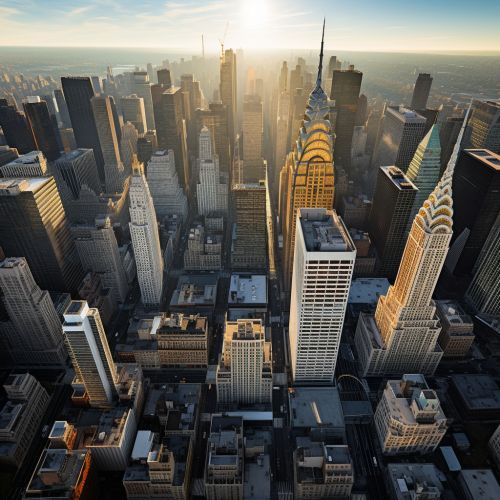Silicon Alley
Overview
Silicon Alley, a term coined in the mid-1990s, refers to the concentration of Internet and new media companies located in the Manhattan area of New York City. While initially confined to the Manhattan neighborhood of Flatiron district, the term has since expanded to include a broader area within New York City that continues to host startups and tech companies.


History
The term "Silicon Alley" originally referred to the cluster of Internet companies located on Broadway in the Flatiron district of Manhattan. The name is a play on "Silicon Valley," the famous hub of technology innovation in California. Silicon Alley emerged as a significant tech hub in the mid-1990s during the dot-com boom when a number of Internet startups established their offices in the area.
Growth and Expansion
Over time, the geographical boundaries of Silicon Alley have expanded beyond the Flatiron district. Today, the term is often used to refer to the entire tech industry in New York City, which includes parts of Brooklyn and Queens as well as Manhattan. The expansion of Silicon Alley has been driven by a number of factors, including the city's strong entrepreneurial culture, its diverse economy, and the presence of numerous prestigious universities and research institutions.
Key Players
Silicon Alley is home to a diverse range of tech companies, from promising startups to established giants. Some of the notable companies that have been part of Silicon Alley include DoubleClick, an online advertising company that was one of the first major successes of Silicon Alley; Foursquare, a location-based social networking website; and Etsy, an e-commerce website focused on handmade or vintage items and craft supplies.
Impact on New York City
Silicon Alley has had a significant impact on the economy of New York City. It has helped diversify the city's economy, traditionally dominated by finance, real estate, and media. The growth of the tech industry in the city has also led to an increase in high-paying jobs and has attracted a significant amount of venture capital investment.
Challenges and Criticisms
Despite its success, Silicon Alley has faced a number of challenges and criticisms. These include the high cost of living in New York City, which can make it difficult for startups to attract and retain talent; the lack of a strong engineering culture compared to Silicon Valley; and concerns about diversity and inclusion in the tech industry.
Future Outlook
The future of Silicon Alley looks promising, with continued growth expected in the coming years. The city's strong entrepreneurial culture, diverse economy, and strategic location are likely to continue attracting startups and tech companies. However, the area will need to address its challenges, particularly around cost of living and diversity, in order to maintain its competitive edge.
